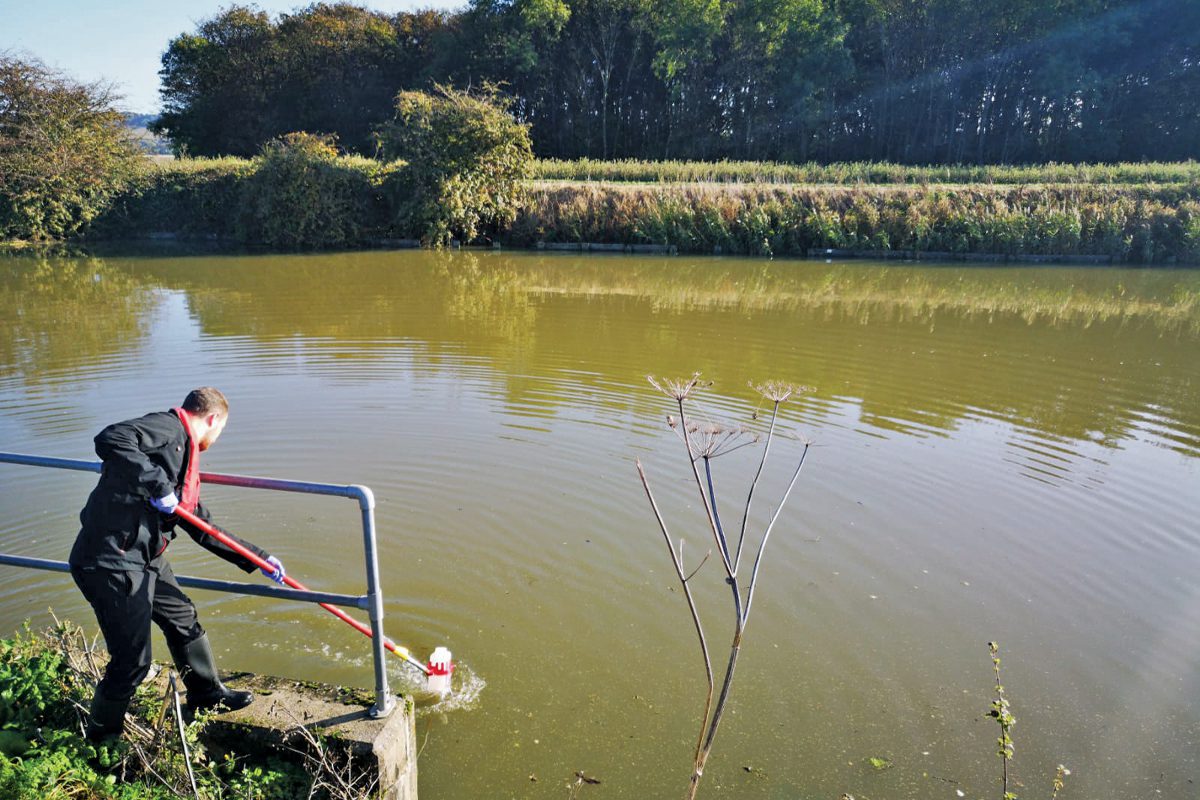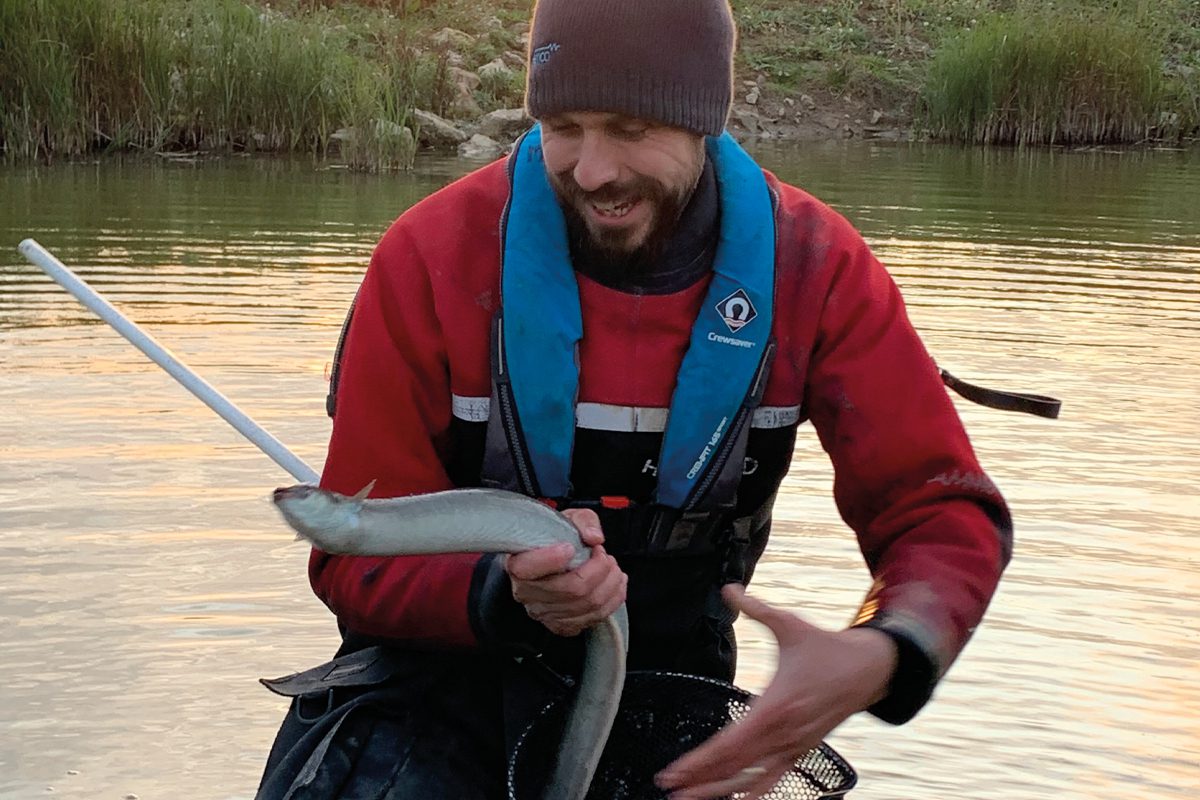Dr Jon Bolland of the University of Hull’s International Fisheries Institute (HIFI) discusses a new project that aims to make pumping equipment more amenable to aquatic life

Researchers at the HIFI have formed the REDEEM project in collaboration with the Environment Agency, the industry group ADA and various IDBs to REsearch and Develop fish and Eel Entrainment Mitigation at pumping stations. The main aim is to understand fish and eel behaviour in order to assess the effectiveness of existing technologies, and to develop innovative approaches for minimising entrainment at pumping stations.
The European eel (anguilla anguilla) is critically endangered and the European Union has a regulation to assist its recovery (The EC Eel Regulation (1100/2007)). As a result the UK has specific legislation, the Eels (England and Wales) Regulations 2009, which includes screening intakes and providing passage for eels. Fish and eels can be entrained in pumping stations, especially adult silver eels during their downstream spawning migration. Consequently providing flood protection and safe eel passage is a particular challenge. However, the extent of the problem is not fully understood and gaps in our knowledge prevent the identification of adequate, cost-effective mitigation measures.
Here, I and the REDEEM project team briefly describe some of the key questions our research is trying to answer for the flood and water level management sector. You can download our full report from the ADA website.
What fish live upstream of pumping stations?
There are over 900 pumping stations nationally, many of which have never had their upstream fish population surveyed. This is partly because traditional sampling techniques are too time consuming, labour intensive and, in some instances, inefficient for eels. At HIFI, we are optimising state-of-the art molecular techniques that detect DNA left behind in river water by resident fish, in order to understand the fish communities upstream of pumping stations. This is referred to as environmental DNA or eDNA.
The first phase of the research was focused on the River Ancholme, which has 12 pumping stations draining directly into it. While eels were detected along the main river, no eels were detected upstream of any of the stations. The longer-term findings will help address fundamental ecological questions about eel migration, passability of barriers downstream and upstream habitat quality and quantity, while informing the prioritisation of pumping stations for remediation.
How do we provide downstream passage solutions at existing structures?
Providing safe (non-pumped) downstream passage for silver eels at pumping stations is a particular challenge given that the downstream watercourse is typically at a higher river level than the upstream pumped catchment. So passage flows cannot be provided using gravity.
Fortunately, approximately one third of the high priority pumping stations within the Anglian region have a co-located gravity sluice. Thus water can be passed downstream using gravity at defined times, such as during low tide.
This aspect of the REDEEM project focused on tailoring operations to maximise silver eel escapement at Witham Fourth District IDB’s Hobhole Pumping Station, which drains into the tidal River Haven near Boston. Specifically, pumps were only operated during daylight hours and upstream river levels were managed to maximise the amount of water sluiced on slack tides during silver migration periods. These are known to occur at night during the new and dark moon phases.
Of the acoustic tagged eels, 80.8% passed downstream through the gravity sluice, with 90.5% of these passing during night sluicing. From this research it is clearly recommended that pumping stations with gravity sluices should consider implementing such changes, especially given potential cost savings it may offer.
Are fish-friendly pumps a potential solution?
Fish-friendly pumping stations may be an option for compliance with eel regulations. Eels need to safely pass through the pumps and associated pipework and outfalls, and without delay to their migration. We assessed the timing, behaviour and fate of eels that approached Lower Medway IDB’s new Bells Pumping Station, on the Isle of Sheppey in Kent, using multi-beam imaging sonar (ARIS). It is one of the first shrouded Archimedean screw pumping stations constructed in England.
The majority of eels imaged using the ARIS approached the pumping station at night, predominantly during a period of increased pumping that coincided with the new moon in February 2019. Approximately a quarter of all the eels that were imaged approaching the pumping station passed through the pump, however a large proportion were imaged retreating back upstream rather than passing through the weedscreen towards the pumps.
These findings have been used to recommend a change to the bar spacing of the weedscreen at Bells pumping station ahead of further research this winter; wider spacing may be less of a deterrent to eels as they approach this pumping station.
How do pumping stations affect coarse fish?
In addition to monitoring eel distribution, entrainment and passage at pumping stations, considerable effort has also been directed towards untangling the problem of coarse fish entrainment.
Images captured from sonar positioned in front of many pumping stations have revealed shoals of thousands of coarse fish making daily movements to and from these structures at dawn and dusk, respectively, during periods when pumps are not operational. Fish occupy some pumping stations during the day throughout winter to seek refuge from piscivorous fish and birds, which are predominately visual predators, as in-channel and riparian habitat become depleted.
Understanding this temporal pattern in fish movements is helping to determine operating regimes at pumping stations and artificial habitat improvements in the upstream river to reduce the risk of coarse fish entrainment.
• This article originally appeared in the Gazette of ADA, an organisation representing the Drainage, Water Level & Flood Risk Management Authorities in the UK, and it is reproduced here with their permission.








